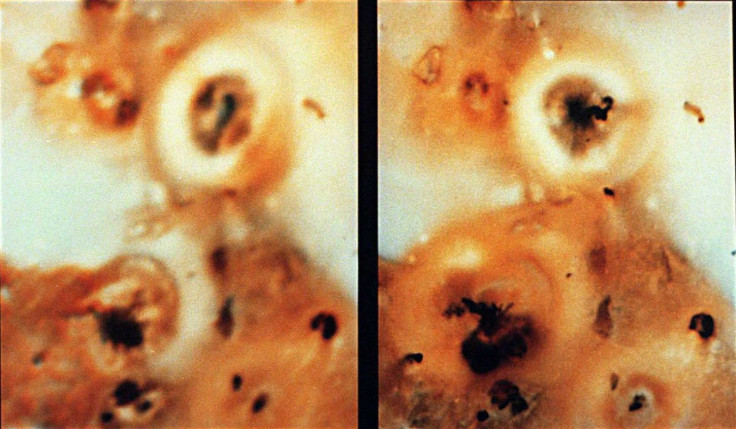NASA's Juno Spacecraft Obtains Images Of Volcanic Plumes On Jupiter's Moon Io [PHOTOS]

The Juno spacecraft's 17th flyby of Jupiter has yielded new images of a volcanic plume on one of the gas giant's moons, Io.
On Dec. 21, four of Juno's cameras — JunoCam, the Stellar Reference Unit (SRU), the Jovian Infrared Auroral Mapper (JIRAM) and the Ultraviolet Imaging Spectrograph (UVS) — observed the Jovian moon Io for over an hour and captured photos of the most volcanic body in the solar system, Phys.org reported. The cameras captured images of Io showing its polar regions and even an active eruption.
On Dec. 21 at 12:00, 12:15 and 12:20 coordinated universal time (UTC), JunoCam obtained the first images of the volcanic plumes on Io before the moon entered Jupiter's shadow. The photos taken showed Io half-illuminated with a bright spot seen just beyond the day-night boundary or the terminator.
Scott Bolton, principal investigator of the Juno mission and an associate vice president of Southwest Research Institute's Space Science and Engineering Division, said it was a stroke of luck for them to have been able to catch an active volcano plume on the Jupiter moon shooting material off its surface. He said they used a ground-breaking multi-spectral campaign to observe Io's polar region, but the Juno spacecraft being able to clearly see and capture images of volcanic plumes came as a pleasant surprise.
Candice Hansen-Koharcheck, the JunoCam lead from the Planetary Science Institute, explained how they were able to capture the images.
"The ground is already in shadow, but the height of the plume allows it to reflect sunlight, much like the way mountaintops or clouds on the Earth continue to be lit after the sun has set," she said.
After the moon had entered Jupiter's shadow, sunlight reflecting off Europa, one of the other Jupiter moons orbiting nearby, helped to illuminate Io and its volcanic plume, as shown in the images from SRU. Scientists believe that a penetrating radiation signature may be the reason for the brightest feature on Io in the image. This would be likely as Io contributes to Jupiter's radiation belts. Another thing the SRU image showed is the glow of activity from several volcanoes on the satellite.
Heidi Becker, lead of Juno's Radiation Monitoring Investigation, at NASA's Jet Propulsion Laboratory, said that the SRU can only observe the moon under very dimly lit conditions as it was designed to be a low-light camera for tracking the stars, according to Science Daily. As such, Io passing behind Jupiter and being illuminated by Europa's moonlight allowed SRU the opportunity to capture images of volcanic activity on the satellite.
As for JIRAM, its primary function is sensing heat at long wavelengths and detecting hotspots in the daylight and at night. It is not usually used to observe Jupiter's moons, but it still takes photos of them each time they zoom past one.
Alberto Adriani, a researcher at Italy's National Institute of Astrophysics, explained that JIRAM's capabilities are actually perfect for studying the volcanic activity on Io. The latest Io image from JIRAM, he said, is actually the best it has obtained so far.
The Juno spacecraft was launched in 2011 and arrived at Jupiter in 2016. It orbits the largest planet on our solar system every 53 days and collects data on its auroras, atmosphere and magnetosphere.
See all the photos of the Io's latest volcanic acivity obtained by the Juno mission here.
© Copyright IBTimes 2025. All rights reserved.



















